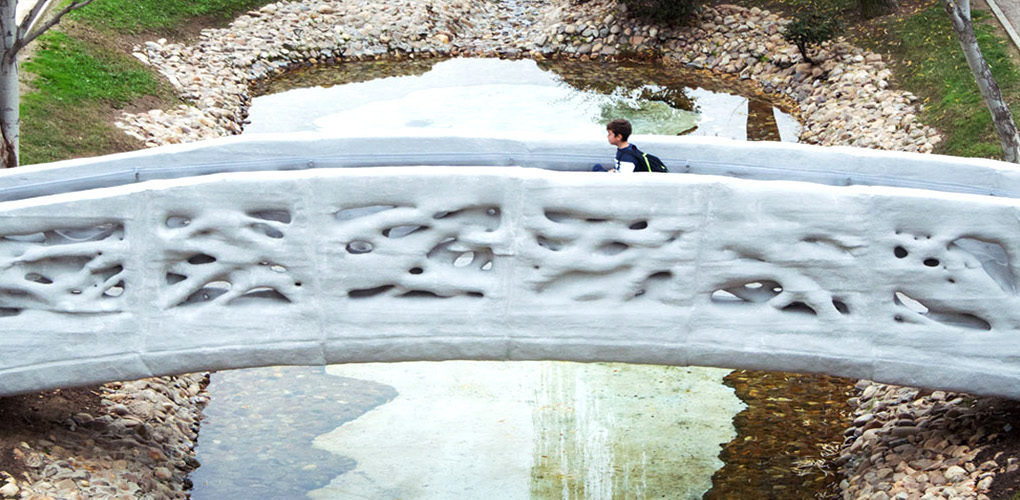The Institute of Advanced Architecture of Catalonia collaborated with Acciona and Enrico Dini to print the world’s first pedestrian bridge. Just south of Madrid in the park of Castilla-La Mancha in Alcobendas, the bridge was inaugurated on December 14th, is 40 feet long, and stretches over a small amount of water. Visually, it looks like it is made of snow or sand.

The Institute of Advanced Architecture of Catalonia is a research and education center based in Barcelona. To produce the eight-part bridge, they collaborated with a number of architects, mechanical and structural engineers, and municipal representatives to make the design a reality. Among them was Dini, known as the “man who prints houses” and who is responsible for the development of a large 3D printer that can bind sand into multiple layers of solid rock. The printer is likely the only one of its kind.
“With the design of the bridge printed in 3D, the Institute for Advanced Architecture of Catalonia remains committed to innovation and becomes a global pioneer in the use of large-scale 3D printing,” the institute said.
The institute remains committed to developing the use of 3D printing on a large-scale level, as it has typically been relegated to small-scale uses. The pedestrian bridge is a first for civil engineering and is being hailed as a milestone in construction at an international level.
To optimize distribution of raw materials and reflect the complex forms found in nature, the designers used parametric modeling, which means less waste and increased stability — the bridge is pictured holding 17 people.
The institute, which aims to “envision the future habitat of our society and build it in the present,” is making strides with 3D printing of this scale in Barcelona, a place rich in innovative architecture and design.
“The computational design also allows maximizing the structural performance, being able to dispose the material only where it is needed, with total freedom of forms, maintaining the porosity thanks to the application of generative algorithms and challenging the traditional techniques of construction,” the institute said.
Image source: Inhabitat
Advertisement
Learn more about Electronic Products Magazine





